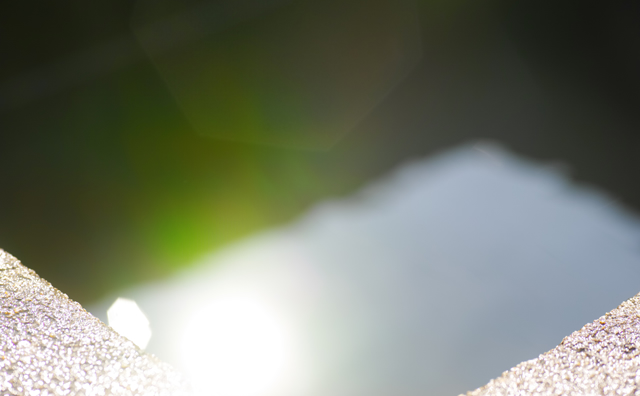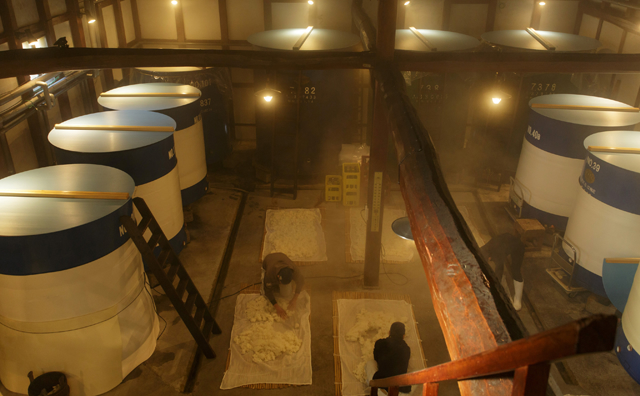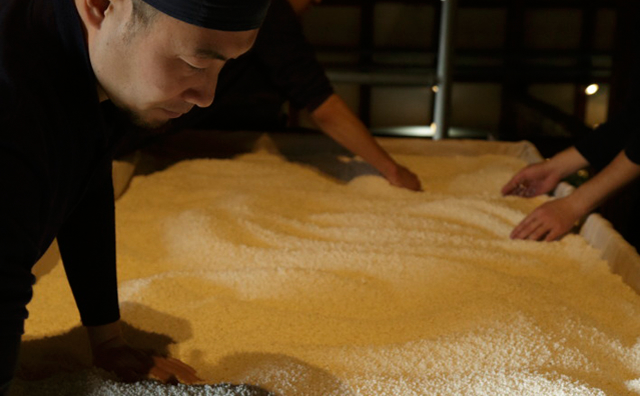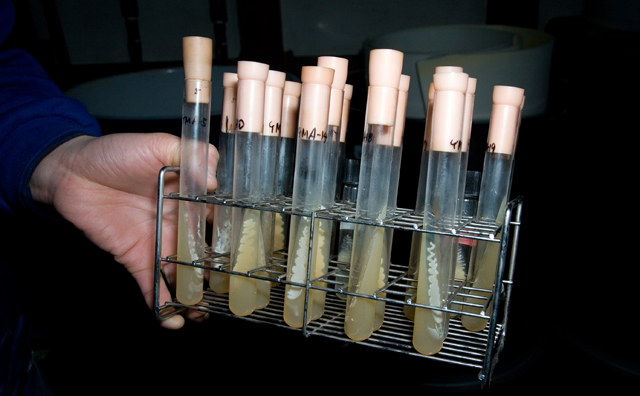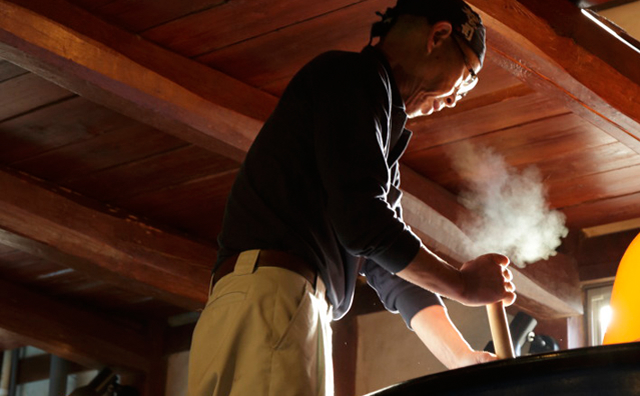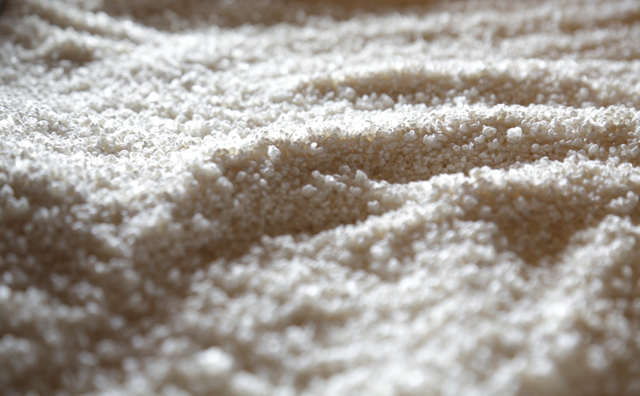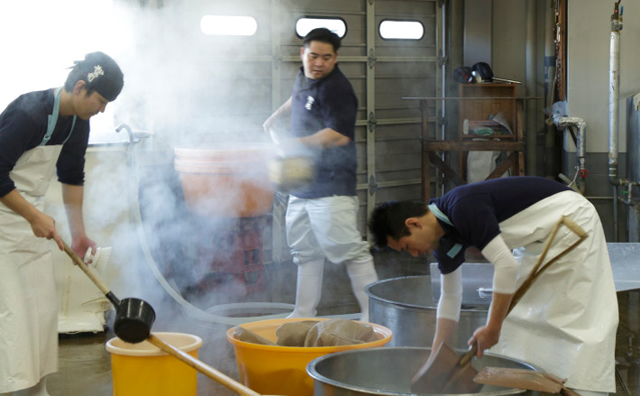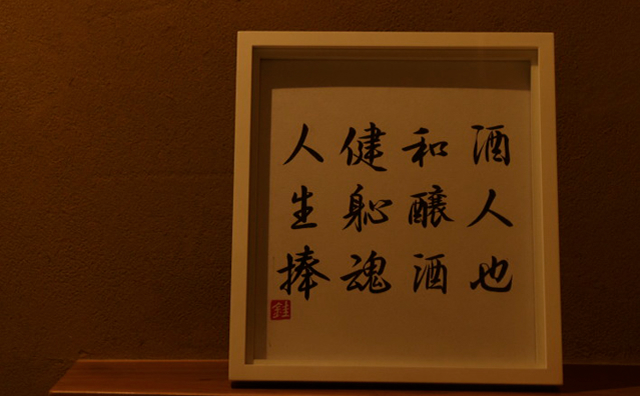Original depth inside a simple flavour
At Matsunotsukasa we aim to always be true to ourselves in brewing sake.
A few simple things make Matsunotsukasa what it is: we start with carefully selected local ingredients,
sake-specific rice grown nearby and water drawn up from 120 m underground.
Our brewing water comes from the underflow of the Echigawa River, which rises in the Suzuka mountain range.
We take the water from where it runs under an expanse of bedrock at a depth of 120 m.
All of our sake rice is grown under direct contract and close supervision, then painstakingly milled by brewery staff.
Sake takes its flavour from koji※1※, and we produce koji-inoculated rice by the box method※2※ and brew
with our own yeast cultures using sokujo※3※ or kimoto※4※ starters as suited to the style of sake.
We take great care when producing sake, brewing the main ferment in small batches (1.2 t or less)
in order to achieve complete fermentation at relatively low temperatures,
and storing bottled sake on site at low temperatures (5℃ or lower),
all to produce the best sake possible based on our extensive brewing experience.
This careful process produces the rich, distinctive Matsunotsukasa flavour.
※1 Koji, Aspergillus oryzae, is a filamentous fungus used to ferment many foods in traditional Japanese cuisine, such as miso, mirin and soy sauce.
※2 The "box" method is a small-batch, labour-intensive process for inoculating steamed rice with koji and allowing it to propagate before being added to the starter or main fermentation.
※3 Sokujo is a modern, fast fermentation starter method that uses commercially produced lactic acid to create an environment friendly to the yeast needed for fermentation but hostile to other, undesirable microorgansims.
※4 Kimoto is a traditional and labour-intensive fermentation starter method where steamed and inoculated rice is pounded and mixed by hand, and the starter is left out in the brewery so that naturally present lactic acid bacteria and yeast can enter and start fermentation.
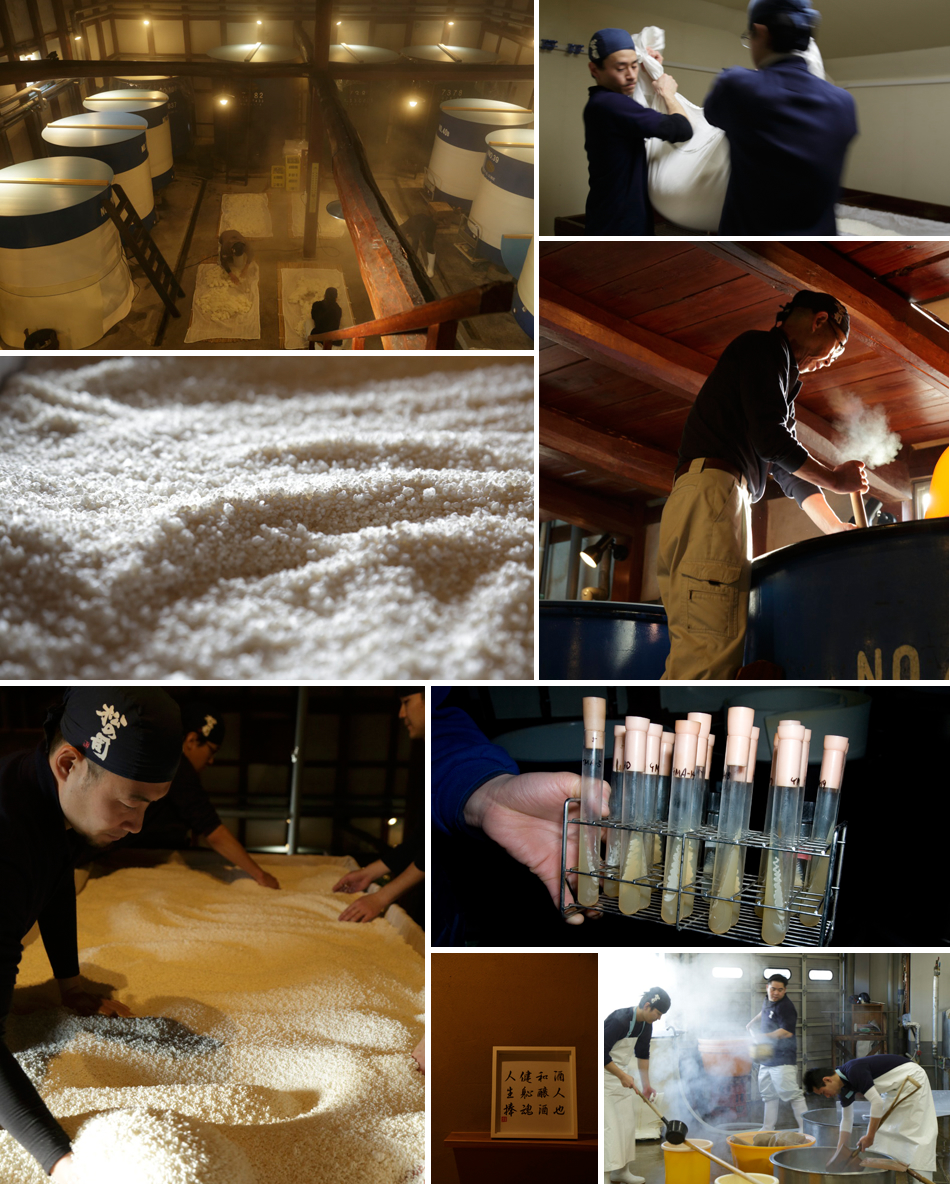 Photo/Takuji Iigai
Photo/Takuji Iigai
Keizou Ishida
Chief Brewer
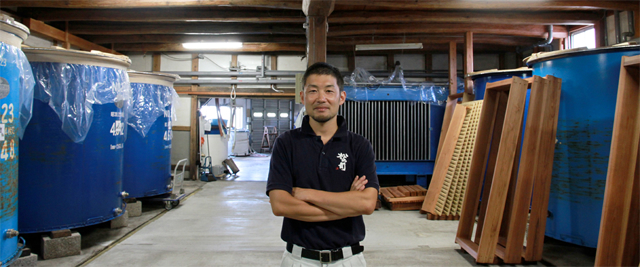
- I want to constantly question the essence of Japanese sake,
and seek out what is important over and above flavour - My creed for sake brewing, both past and future, is that you cannot create while actively aiming for a specific goal.
- My brewing style may look very sparse and modest to an outsider, but our sake is born from everything that makes up this brewery. Conserving its mild character is important to me, and this means that the hand of the maker should not be reflected too strongly in the sake. I'd like everyone who drinks Matsunotsukasa to experience calm and tranquillity. Sake that's so flamboyant as to be startling or sake that people exclaim over just doesn't feel right to me, and it's not something I can make. My sake has the same calmness you feel in the idyllic rural setting you see all around us. You could say that what everyone at the brewery is aiming for is a sake that's not too unsophisticated but has some refined elements.
- The sake carries hints of the essence of everything that surrounds us right now. The speed at which information can be sent out via social networking increases year on year. In Japan and overseas, all kinds of sake events are being held for professionals and the public alike. The industry is changing beyond all recognition but I won't be swayed by the fashions of the day. I want to constantly question the essence of Japanese sake, and seek out what is important over and above flavour.
- There's no meaning in making a technically demanding and extravagant sake if it ends up being weak. And coarse sakes that turn their backs on craftsmanship and technique present an artificial ideal that covers over their true nature. My brewing style makes sake feel like a natural product, even though it's something that would never occur naturally. In its truest sense it's like the water or air around us, or the affinity between body and soul, something I dream of and want to devote myself to until you can feel the atmosphere of the brewery, the personality of the chief brewer and staff, the scenery of the fields that surround us, so that the people who drink it will experience the calm and tranquillity that come from these many elements merging harmoniously into one.
- To achieve this, I try to avoid going too far in any one direction and instead seek out flavour alone, experimenting with different factors like ginjo-style brewing※5※, kimoto※6※ starters or organic farming, constantly challenging myself with something new to advance not just Matsunotsukasa but also Japanese sake as a whole.
Although I still have a long way to go, I hope that those who drink our sake will enjoy it both now and for many years to come. - ※5 Ginjo-style brewing involves a long, slow fermentation at cooler temperatures to develop certain distinctive aromas and flavours.
- ※6 Kimoto is a traditional and labour-intensive fermentation starter method where steamed and inoculated rice is pounded and mixed by hand, and the starter is left out in the brewery so that naturally present lactic acid bacteria and yeast can enter and start fermentation.



